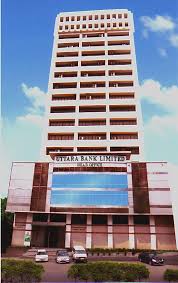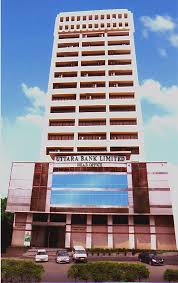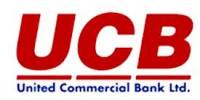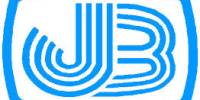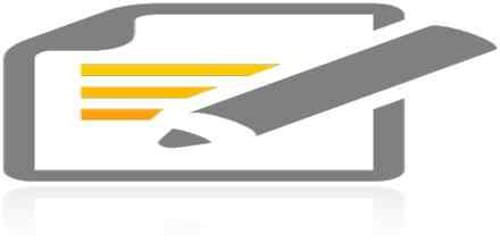Executive summary
Head Office, Motijeel began its operation in 1966 with the inauguration of Uttara Bank Ltd. S Head Office, Motijeel conduct all types of commercial business activities. The core business of the branch comprises of import, export (Authorizer Dealer, AD Branch), and working capital finance. The bank is also rendering personal credit, services related to local and foreign remittances.
The bank strategy is gradually covering total area of banking. This internship report covers the total area of banking of Head Office, Motijeel. The report intends to cover a comprehensive analysis of overall activities of Head Office, Motijeel, an appraisal of performance and management effectiveness. This is the first time when a Head Office, Motijeel of Uttara bank becomes first in foreign exchange business.
Uttara bank Head Office, Motijeel is operating through 23 people. Among them 1 (one) is AGM, 1 (One) is senior principal officer, 6 (Six) are Principle Officers, 5 (Five) are officer grade–II, 2 (Two) are assistant officer, 1 (One) is Cash Sorter, 1 (One) Jamader, 1(One) messenger, 1 guard and other part time employee.
Branch has three departments. One for foreign exchange, another for loans and advance, and other department conducts general banking activities. Head Office, Motijeel offer a wide range of services to its customer including local corporations, national companies, multinational companies, domestic and other donor agencies, NGOS and other financial institutions. Major customers are big companies.
The bank mobilized deposits of TK. 3500.00 lac as on 31st December, 2008 . On 30th June 2008 the branch collect total deposits of tk.2850.36 lac against its target of tk.3000.00 lac during the period of six month 30th June.
Head Office, Motijeel has a plan to provide ATM services in the future and on line services in its customer with a view to increase its profit. Bank also have to increase correspondent relationship with foreign bank such as CITI Corp, American express, Bank of Tokyo, standard chartered with a view to expand its business.. Foreign exchange is the top most income generating source of the branch.
The primary business of foreign exchange department of the branch is to make reimbursement and payments on behalf of issuing bank.
Some of the problems of the Head Office, Motijeel is disclosed in details in the report. The problem may be stated as: lack of new clients, shortage of staff, staff demodulation due to late working hours, over dependence on few staffs, few clients, and absence of training, insignificant marketing efforts. Head Office, Motijeel of Uttara bank has huge prospect in Bangladesh because most of the international business in the country done through this branch.
Chapter: 1
Introduction
Objectives of the study
- The report is aimed at studying and understanding the various products offered by the different department of Uttara bank as well as several activities.
- Report also analyse how Head Office, Motijeel maintain growth in competitive business.
- Finding problems in the banking procedure of different department, strength and weakness, opportunity, and threats of the Head Office, Motijeel
- Providing possible solution that will increase bank profits and maintain growth in the market.
- Finally the report will also evaluate future prospects of the branch.
Scope
This report covers all the banking activities of Uttara bank limited Head Office, Motijeel, such as L/C opening, L/C advising. L/C negotiation, L/C confirmation, reimbursement, payment collection, loan against trust receipt, loans, and advance, recovery of loans , foreign and local remittance of bank, bills receive and collections, issuing of D.D.,P.O., M.T, T.T, as well as problems in banking process. These performance analyses of Head Office, Motijeel was carried out to determine the progress of ban k and prospect in future.
Methodology
Secondary sources are used to collect data regarding bank profit, deposit, import and export. Publication and database within organization, annual and quarterly report, monthly statements and official web site of the Uttara Bank Ltd are used to collect data.
Limitation
This report may have some incompleteness due to some of the limitation,
- One major limitation was time constraint. This report could easily have been prepared in a much broader and extensive manner with more time.
- Some essential data could not be gathered because of confidentiality concern. The raw data available in the organization database system, different reports, statement were also not organized.
- I could not visit the difference branches of Uttara bank and had to depend on Head Office, Motijeel for all information for preparing report.
- Another limitation was data gathered could not be verified for accuracy due to time limitation.
Chapter: 2
Profile of Uttara Bank Ltd.
History:
Uttara Bank-one of the largest and oldest private-sector commercial bank in Bangladesh, with years of experience. Adaptation of modern technology both in terms of equipment and banking practice ensures efficient service to clients. 207 branches at home and 600 affiliates worldwide create efficient networking and reach capability. Uttara is a bank that serves both clients and country.
The establishment of Uttara Bank came into existence in mid sixties when the Pakistani big business houses had completed control over banking business of the country.
Formally known as Nath bank Ltd An Indian Bank, which had its origin in 1926 and closed its door on 24.03.1950 converted into Nath bank (Pak) Ltd on 28.06.1954 had been changed to eastern banking Corporation Ltd under scheme of arrangement sanction by Dhaka High Court and incorporation with effect from 10.02.1960 with authorized capital of RS. 20,00,000 divided into 8000 shares of RS.25 each and started function from 28.01.1965 a Bengali bank in east Pakistan having its Head Office at Dhaka initially at 130,Motijheel commercial area and then at 125/A Motijheel commercial area from November 1965 with an initial deposit of less than Tk.1.00 corer and with a paid up capital of 14.21 lac raised from the small income group of Bangladesh and without any financial help either from the State bank of Pakistan or from then the Pakistan government and made its headway in the face of hard competition with the big and strongly established Pakistani banks with careful planning. The bank was enlisted as a schedule bank on and from 22.06.1965, full pledged member of Dhaka clearing house on and from 17.09.1965 and had been successful in appointing agents and foreign correspondent all over the world to deal in foreign exchange. Moreover Eastern Banking Corporation Ltd played a vital role during liberation period. Most of the people of East Pakistan ware motivated to patronize and deposit their money to this bank.
The martial law authority tried to stop financial transaction with this bank during the period. In 1972 the status of the bank had been changed by Bangladesh bank (Nationalization) order 1972 in conformity with the policy of the government. The paid up capital was further enhanced to Tk. 2.00 corer in 1974 .Since then it had operated as nationalized bank under the name of UTTARA BANK till on 15th September 1983.Consequently upon the amendment of Bangladesh Bank (nationalization) order 1972 and an agreement dated 15th September 1983 between the government of peoples republic of Bangladesh of the part and Uttara Bank Ltd of their port, the company i.e. Uttara Bank Ltd acquired the entire undertaking of Uttara Bank Ltd including its business, project rights, power authorities and investment and deposits and its borrowings liabilities and obligations of whatever nature .Uttara bank rescheduled as the name of Uttara Bank Ltd with effect from 15.09.1983 by govt. notification dated 6th October 1983. Transfer to private management (elected by shareholders on 15.07.198 in extra ordinary general meeting) with effect from 16.07.1984.The head office of the bank has been shifted to its own 19 storied building located a90-91, motijheel commercial area, Dhaka with effect from 10.07.1989. At present the bank has 202 branches through Bangladesh with agents and correspondent all over the world, The bank has 12 Zonal Offices around the country. UBL has got 202 branches that all are controlled and monitored by this Zonal Office.
Major Services:
- Foreign exchange
- Loans and advance
- Bills receiving and bills collections (P.O.D.D. Check, bills etc.)
- Issues of P.O, D.D, M.T., T, T, S.C., LSC.etc.
- Foreign and local remittance
- Money Gram and
- Instant Cash
The bank mobilized deposits of TK. 3500.00 lac as on 31st december,2008. On 30th June 2008 the branch collect total deposits of tk.2850.36 against its target of 3000.00 of satmasjid road branch during the period of six month 30th June.
Background information of Head Office, Motijeel:
Head Office, Motijeel began its journey with the inauguration of the Uttara bank at 741, Head Office, Motijeel, Eastern Elite Center conduct all types of commercial banking activities. The core business of the branch comprises import, export, loans and advance, local and foreign remittance. The branch strategy is gradually covering all area of modern banking. The objective of the bank is to provide high quality service to its customer, to participate in the growth and expansion of national economy, to set high standard of integrity, to bring satisfaction of clients, share holders and employees and become the most sought banking of the country. Rendering technology driven innovative services by dedicated team of professional.
Head Office, Motijeel was operated with 23 employees, among them AGM 1, S.P.O. 1, principal officer-6, officer grade –II- 3, assistant officer- 3. Currently the branch offer trade financing, bills collections and bill receivable services through issues of D. D. T.T. M.T. P.O. Local and foreign remittance services, loans and advance, and others retail bank services to its individual customer. Branch has earned tk. 502.79 lac total incomes in 2007, where as total expenditure was tk. 228.02 lac and it had made net profit tk. 274.77 lac. branch earned tk.136.91 lac net income on 30th June 2002.branch has made 3198.5 lac advances on 30th June 2008, whereas it was 3552.79 lac in 31st December 2007. During six month branch has made 1805.61 lac import and 144.37 export, 1993.52 local remitence,165.22 lac Tk. foreign remittance on 30th June 2008.All the business activities of the branch are increasing in a secular trends .
Some of the problem of the Head Office, Motijeel is summed details in report, lack of new clients, shortage of staff, demodulation due to late working hours, over dependence on few staffs, and few clients, absence of training, insignificant marketing efforts. Head Office, Motijeel of Uttara bank has huge prospect in Bangladesh because most of the international business in the country done through this bank. As business community now has more option to avail international trade service through a number of institutions practically more customer orientation is to satisfied customer needs and retains these customers. Finally some policies implementation and recommendation for future improvement of the branch.
Management efficiency:
Management of the branch is very efficient. Discipline is strictly follows in all activities of the branch. Management always follows banks norms, culture, and ethics. Management immediately implements any circular from head office, Bangladesh bank, finance ministry. Any type of new technology, new method of written report, and submission of statement immediately implement in the branch. Always he observes all the officers work. In case of any types of error in the works by an officer, he immediately takes measure to rectify it. He is always concerned about customer satisfaction as well as entertainment of the valuable clients. In case of any complain form customers in any banking service, he accepts it and rectify. He always takes suggestion from the clients for their future satisfaction. Manager also conscious about employee satisfaction as well as their claims and argument, and try to give appropriate solution of their problem .He is always conscious about building team work among them. In case of any employee’s absence, he fills the gap by other officers so that any official work is not left pending. Manager directly observes performance of the officers and reports them to the higher authority for promotion. Official discipline are strictly followed, no employees and officer cannot go out of office without permission of the manager. Employees have to wear official dress, present in their desk, until finished of the official works. In case of any disobey of official discipline, immediately actions are taken. Management into regarding concern hygienic working environment, such as pure drinking water, canteen for lunch, entertainment for the staff, neat and cleanness of the branch, toilet bath room facility, prayers place for the people.
Chapter: 3
General Banking
Account opening:
Account opening is one of the foremost activities of a bank. By opening of an account, a person becomes a customer of a bank. It is a legal contract between the bank and the customer. An account opening form is the contractual document. It is the legal basis of banker customer relationship.
STD Account:
- Govt., Semi-Govt., Autonomous organization and an individual may open STD Account with UBL.
- UBL offers attractive/competitive rate of interest (5.5%) in STD Account.
- 7 days notice required to withdraw big amount
Deposit:
A bank is essentially an intermediary of short‑term funds. It can carry out extensive lending operations only when it can effectively channel the savings of the community. A good banker is one who effectively mobilizes the savings of the community as well as makes such use of savings by making it available to productive and priority sectors of the economy thereby fostering the growth and the development of the nation’s economy.
Therefore deposit is the blood of a bank. From the history and origin of the banking system, we can know that deposits collection is the main function of a bank.
- Savings Deposit
- F.D.R.
- Double Benefit Deposit
- Monthly Deposit
a. Savings Deposit:
- Any Bangladeshi National residing home or abroad may open savings account with UBL.
- The account may be opened in single/joint name.
- The account holder may nominate his nominee in this account.
- The nominee can get the balance amount without submitting succession certificate after the death of account holder.
a.1 Features:
- Minimum amount : Taka 1,000.00
- Rate of Interest : 6%
- Free Cheque-Book facility
- Opportunity to apply for – safe deposit locker facility
- Collect foreign remittance in both T.C. & Taka draft.
- Transfer of fund from one branch to another by
- Demand Draft
- Mail Transfer
- Telegraphic Transfer
- Transfer of fund on Standing Instruction Arrangement
- Collection of cheques through Clearing House.
- Issuance of Payment Order / Call Deposit.
a.2 Required Documents:
Account opening form as per format below. The account opening form and signature card to be filled in and duly signed.
- Two copies passport size photographs of the account holder.
- Photograph of nominee (if any) duly attested by the account holder.
- Photocopy of the 1st 7 pages of the passport for non-resident Bangladeshi national.
- Signature in the account opening form/card must be same with the signature of the passport.
b. FDR Account:
- Any Bangladeshi national residing home or abroad may open FDR with UBL.
- FDR may be opened in single/joint name for a period of 3, 6, 12, 24 and 36 months.
- UBL offers attractive/competitive rate of interest in FDR.
b.1 Fixed Deposit (FDR) Rate of Interest
3 months & above but less than 6 months 9.5%
6 months & above but less than 1 year 10.00%
1 year & above but less than 2 years 10.50%
2 years & above but not more than 3 years 11.50%
b.2. Cash Section:
Cash section plays a vital role in the general banking procedure. Because it deals with
most liquid asset. This section receives cash from depositors and pays cash against cheques, drafts, and pay order and in slip over the counter. This branch also facilities electronic counting machines to the customers for a huge amount of cash money can be counted within a few minutes.
b.3 Cash receiving procedure:
Depositors deposit cash, cheques, drafts, pay order etc. In these types of deposits, the depositors must write it in the following way:
- Date of the instrument.
- The title of the account and its number.
- The amount in figure and in words as same.
- The signature of the depositors.
The teller will place signature and affix ‘cash received’ rubber stamp seal and record number in the cash received register book against the account number. After finishing all these procedure, the cash officer passes the deposit slip by posting in the computer section and return the customers copy.
b.4 Cash Payment Procedure:
Before honoring a cheque, the banker has to observe the cheque in the following way:
- Whether a cheque is an opened or crossed cheque, it must be looked.
- Whether the cheque is drawn on his/her branch, it must be observed. If the cheque is post dated then it must not be paid.
- If the cheque is mutilated materially altered then the officer must not honor that cheque.
- The officer must verify the regulatory of the endorsement.
- The officer must compare the signature of the cheque with the signature on the specimen signature card.
After verifying all these documents the officer passes it to the computer section for more verification. By putting ‘pay cash’ seal, the officer gives the cash amount to the holder and in the paid register.
c. Double Benefit Deposit Scheme:
Any adult Bangladeshi National will be eligible to open this account.
Minimum Tk.1, 00,000/- (Taka One Lac only) and multiples thereof will be accepted as deposit under this scheme.
The period shall be of 6 (six) years term. Deposit may be en-cashed before its maturity and no interest will be paid, if en-cash before 1(one) year of deposit.
c.1 Features:
1. Interest will be paid at Savings rate if encashment after 1(one) year.
2. Advance will be allowed up to 80% of the deposit after completion of
3. One year. Full amount including interest will be paid on maturity.
4. Govt. tax, Surcharge, Source Tax, Levy, Govt. Excise duty will be recovered from the depositor’s A/C. Account holder can appoint a nominee against the account. Bank reserves the right to close the account at any time and make amendment / alteration of the terms & conditions of the scheme without assigning any reason.
d. Monthly Deposit Scheme:
a) Any adult Bangladeshi National will be eligible to open this account.
b) The period of the scheme will be 5 (five) years and 10 (ten) years term.
c) Monthly installment will be Tk.500/-, 1000/-, 2000/-, 3000/-, 5000/- & 10000/-
d) Monthly installment to be deposited within 10th day of the month.
e) No cheque book will be issued against the account.
Installments, the account will be automatically closed. If the A/C holder fails to deposit 3(three) consecutive monthly after due date a penalty of Tk.50/- will be realized from the A/C holder
f) Advance will be allowed up to 80% of the deposit after completion of
g) Interest will be paid at Savings rate if encashment after 1(one) year of
One year
h) Advance will be allowed up to 80% of the deposit after completion
Deposit of one year.
Clearing section:
According to the Article 37(2) of Bangladesh Bank Order 1972, the banks, which are the member of the clearinghouse, are called as Scheduled Banks. The scheduled banks clear the cheque drawn upon one another through the clearinghouse. This is an arrangement by the central bank where everyday the representative of the member banks gather to clear the cheque. Banks for credit of the proceeds to the customer’s accounts accept cheque and other similar instruments. The bank receives many such instruments during the day from account holders. Many of these instruments are drawn payable at other banks. If they were to be presented at he drawer banks to collect the proceeds it would be necessary to employ many messengers for the purpose, similarly there would be many cheque drawn on this bank from other banks. The whole process of collection and payment would involve considerable labor, delay, risk and expenditure. All the labor, risk, delay and expenditure are substantially reduced by the representative of all the banks meeting at a specified time, for exchanging the instruments and arriving at the net position regarding receipt or payment.
The place where the banks meet and settle their dues is called the Clearinghouse. Clearinghouse sits for two times a working day. The members submit the cheques, in the respective desks of the banks and vice versa. Consequently the debit credit entries are given. At the end, debit summation and the credit summation are calculated. Then the banks clear the balance through the cheque of Bangladesh Bank. The dishonored cheque are sorted and returned with return memo named ‘Memorandum’.
Reasons for dishonored cheque:
Following are the general reasons to dishonor cheque in the process of clearing by the bank of clearing –
- Refer to drawer.
- Not arranged for.
- Balance insufficient.
- Effects not cleared, may be presented again.
- Exceeds arrangements.
- Full cover not received.
- Payment stopped by drawer.
- Payee’s endorsement irregular/ illegible / required.
- Payee’s endorsement irregular, require bank’s confirmation
- Drawer’s signature differs / required.
- Alterations in date / figures/ words require drawer’s full signature.
- Cheque is post dated / out of date / mutilated.
- Amount in words and figures differs.
- Clearing stamp required / requires cancellation.
- Cheque are not crossed “Account payee only”
Foreign Exchange is very lucrative & profitable in modern Banking business. It’s recognized as a way of generating maximum profit with low investment. In other Banking like advance needs high capital investment. But foreign exchange required comparatively low investment. In foreign business complexity is high due to rapid change in technology especially for a bank consists of so many branches dispersed in a wide region. The system is easy for a bank to control rich in capital equipped with modern technology concentrated in a small areas. Technology is necessary to prepare quick statement, getting information, preparing reports .Now technology is a turbulent in foreign exchange business. To survive in the competition, a bank has to adapt with this changes. For this, it requires skilled manpower, on line banking, 24 – hours banking services, high capital investment. Problems arise in foreign exchange for changes in economical and political business environment of the country. Changes in exchanges rate, change in currency rate, govt. rules and regulations, create problems while dealing in foreign business. So it needs always a conscious mind for successfully dealing in foreign business.
Chapter: 4
Foreign Exchange
Distinctness of foreign business with other banking:
There is a wide difference exist between foreign exchange operation with other banking operation. Foreign exchange operation is very technical, complex and high risky but highly profitable for the bank. General banking is traditional, bounded by per specified rules and regulations. Interest rates, commissions, exchanges, postages & telephone, stationery are alike for all Banks. General Banking systems are not so complex, high risky, highly profitable for the banks. Foreign exchanges always guided by the rules and regulations of Bangladesh Banks where rules & regulations are changing frequently .That create difficulty in dealing foreign exchange.
How to deal with foreign exchange:
Generally Foreign exchange works with L/C .L/C is a contingency liability for the bank. In general banking like deposits, advances & loans, remittance may be a direct liability for the bank. L/C liability may be direct when documents are realized. Foreign exchange is a sequential steps or procedure in which payments are made after getting some documents at a specified margin, by deducting some interests, commission, exchanges and other charges. In each stage, it needs to keep record in separate register according to the L/C class.
Risks in Foreign Exchange:
Risk in Foreign exchanges is very high. In other banking, risk is comparatively low as guarantee or pledge are there against loans or advance. But foreign exchange is wholly document based business. After documents are confirmed, payments are made to the party. But if the party failed to submit documents and shipment of goods then it becomes very risky for the bank to recover the due money. Loans may be doubtful in that case. Loses may be high if the goods are not properly marketable. In general business losses of some taka may be bearable for the bank. But foreign exchange deals with several countries currency. In case of few dollar loss, may be substantial impact on company’s profit. So it needs much care while converting of an L/C dollar equivalent in taka.
Current situations of import and export:
Current situations of import and export are downward due to country’s overall economic situation. Although Bangladesh has a comparative advantage of low cost due to available cheap labor. But low cost always are not a matter, due to late shipment buyer cannot get delivery in due time. In the mean time, customer preferences and market demand changes. Buyer cannot take delivery many times. Then an exporter obligates to sell those goods by discount. But always it is not possible to sell the goods with discount. Then exporter obligates to sell goods with auctions in the ports. Thus always advance recovery against foreign exchange is not possible.
Parties Concerned With L/C:
How to open an L/C:
For opening an L/C, there must be a relationship between banker and customer through opening an account with the bank.
Procedures for opening Bank accounts:
- Before opening accounts, clients must submit some paper
a) In case of company, submitting of annual financial statement is mandatory.
b) In case of individual, submit to all types of income tax payment certificate is mandatory.
There are three types of bank account.
a) Savings account
b) Current account
c) STD
d) FDR
Import registration certificate:
(IRC) must be taken from the importer. Since L/C is a contingent liability – which will be incurred in future, some documents to be needed to reduce risk. These are –
- D.P. Demand promissory note.
- Revile letter –in case of limited company.
- Balance of liability letter
- Perform a invoice
- Articles of association.
- Goods not be benumb is embedded by import policy.
q A bank dealing officer always liable for assessing ultimate risk of L/C.
q L/C means payment of guarantee by the issuing bank to the nominee bank or to a third country bank, agent or any financial institution.
q After submitted all these documents importer have to fill up application or agreement for irrevocable letter of credit.
Then the importer has to submit a proposal for opening L/C along with:
L/C application.
License no.
Performa invoice.
Parties’ application.
L.c. set
IRC.
Insurance covered note.
Meaning of Credit:
According to UCP 500 – documentary credit means any arrangement however named or described, whereby a bank (the issuing bank) acting at the request and on the instructions of a customer (the applicant) or its own behalf.
1) Is to make a payment to or to the order of a third party (the beneficiary) or is to accept and pay bills of exchange (drafts) drawn by the beneficiary.
2) Authorizes another bank to effect such payment or to accept and pay such bill of exchange.
3) Authorizes another bank to negotiate against stipulated documents provided that the terms and conditions of the credit are completed with.
A credit may be either 1) Revocable 2) Irrevocable.
A revocable credit may be amended or cancelled by the issuing bank at any moment and with out prior notice to the beneficiary.
An irrevocable credit constitutes a definite undertaking of the issuing bank, provided that the stipulated documents are presented to the nominated bank or to the issuing bank and that the terms and conditions of the credit are complied with
Types of credit:
All credit must clearly indicate whether they are by sight payments, by deferred payments, by acceptance or by negations.
Unless the credit stipulated that it is available only with the issuing bank all credits must nominate the bank (the nominated bank) which is authorized to pay, to incur a deferred payment undertaken to accept drafts or to negotiate.
Different types of registered in foreign exchange:
Back to back L/C registered where L/C are records individually. 2. Bills of exchange 3.IFBC register 4. BG registers 5.LIM Register 6. LTR Register 7. OD register 8. CC Register 9. Others
Nature of L/C:
- Cash L/C ( at sight)
- Cash L/C (Usance)
- Inland B/B L/C(sight)
- Foreign B/B L/C (Usance)
- L/C under AID loans
- Import from EPZ B/B/L/C) (Usance)
- Import from EPZ B/B/L/C) (sight)
- Import from EPZ 9CASH L/C (SIGHT)
- L/C UNDER sta.
- Others
Sight:
Where payment are made immediately with presentation of the documents.
Usance:
Where payments are made after certain period 30 days, 90 days, or 120 days deferred payments.
Back to back L/C:
An L/C which is issued against a master L/C of a foreign country bank or the instruction of home country bank in favor of applicant for buying accessories, raw materials from home or abroad as a guarantee as a guarantee of payment.
Before guarantee, the documents to be checked:
Guarantee of payment of master L/C.
Reference of uccp-500.
Negotiating terms and conditions.
Back to back L/C is mostly issued in Bangladesh. When a beneficiary receives a letter of credit which is not transferable and he cannot furnish the goods himself, he may arrange with his banker to issue a second credit which is known as back to back L/C to supplier to supply the goods.
As both L/C cover the same goods the back to back credit must be issued with identical terms to the muster L/C, except that the credit amount, unit price if any are smaller. The expiry date under the back to back credit is earlier while the latest shipment date may have to be advanced. The bank issuing back to back credit will obtain repayment through muster credit which is deposited to the issuing bank of the back to back credit. The bank must try to maintain control of the documents and hold them after payment to the supplier pending receipt of its customer’s invoices and present the documents itself for payment under the muster credit in favor of its customer.
L/C Procedures:
Various steps involved in the operation of credit are described as follows:
The importer and exporter have contract before a L/C has been issued.
The importer applies for a L/C from his banker known as the issuing bank. He may use his credit lines.
The issuing bank opens the L/C that is channeled through its overseas correspondent bank, known as advising bank.
The advising bank informs the exporter of the arrival of the credit.
Exporter ships the goods to the importer or other designed place as stipulated in the L/C.
Meanwhile the exporter also prepares his own documents and collects transport documents or other documents from relevant parties. All documents will be sent to his banker which is acting as negotiating bank.
Negotiation of export bills occur when the banker agrees to provide him with finance. In such case he obtains payment immediately upon presentation of documents.
Documents are sent to issuing banker reimbursing bank, which is a bank nominated by the issuing bank to honor reimbursement from negotiating bank for reimbursement or payment.
Issuing bank honors to its undertaken to pay the negotiating bank on condition that the documents comply with the L/C terms and conditions.
Issuing bank releases documents to the importer when the letter makes payment to the former or against the letter trust receipt facilities.
The importer takes delivery of goods upon presentation of the transport (usually shipping documents).
Parties involved in letter of credit:
The applicant:
The applicant is the party who generally approach in order to issue the L/C.
The issuing bank:
The bank issuing the L/C is known as issuing bank and it is usually the bank with which the importer maintains an account. The issuing bank undertakes an absolute obligation to pay upon presentation of documents.
The advising bank:
The correspondent bank sends the L/C is commonly referred to as advising bank. The advising bank simply advises the L/C without any obligation on its part. However, the advising bank shall take reasonable care to check the apparent authenticity of the credit that it advises.
The beneficiary:
The beneficiary or exporter is the party entitled to draw payment under L/C. The Beneficiary will have to present the required documents to avail payment under L/C.
The Confirming bank:
The confirming bank confirms that the issuing bank has issued a letter of credit. The confirming directly obligated on the credit to the extent of its confirmation and by confirming it, acquires the right and obligation of an issuer.
The negotiating bank:
The bank that agrees to examine the documents under the L/C and pay the beneficiary is called the negotiating bank. Typically, the advising bank is nominated as the negotiating bank.
Circumstances of issuing a revolving L/C:
If an importer is trading with an overseas exporter and purchasing the same goods as regular basis, with the same terms and condition at the same unit price, he can issue a revolving credit to his exporter instead of having to issue a letter of credit with the same terms and conditions every time. This will save his time and trouble of having to apply for much credit.
Advantage and disadvantage of L/C:
Advantages:
- An importer can assure that the exporter has complied with certain terms and condition as specified in L/C before payment.
- Importer can insist on shipment of goods within a certain time stipulated a latest shipment date.
- He can get advice from the banker according to L/C terms.
- He can ask for financial assistance from the banker.
- Protection offered by UCP500.
Disadvantages:
- Issuing bank obliged to pay even though the conditions of goods may be poor.
- L/C commissions are relatively high.
Chapter: 5
Loans and Advances
Loans & Advances of Satmasjid Road Branch
Categories of Loans:
Agriculture
Large and medium scale industries
Export
Other commercial lending(jute and fertilizer)
Small and cottage industries
Others:
a) Housing loans
b) Residential
c) Commercials
d) Transport
e) Cold storage
f) Brick field
g) Gold loans h
h) Against work orders
I) Against work FDR
J) Loans against sanchaypatra
k) Loans against WEBD, ICB, unit certificate
l) Loans against life insurance policy
m) Others special program
Classified Loans & Provisions
According to Bangladesh Bank BRDP Circular No.2001/ 16 Sec 1.2
- If any existing or current loans are not recovered with in expiry date then it is regarded as irregular loans. If any irregular loans are not recovered above 6 months but less than 9 months then it will treated as substandard loans. If it not recovered with in or above 9 months but less than 12 months then it will be treated as doubtful debt.
- Irregular loans unrecovered above 12 months then it is called bad loans.
- If a loan is not recovered with its due date then it is called classified loans.
Provision Rate
Percentage
UN classified 1%
Substandard 10%
Doubtful debt 50%
Bad loans 100%
In the subsequent stages this rate may be increases
| Activity | 2005 | 2006 | 2007 | 2008 |
| Deposit | 1675.45 | 1920.67 | 2511.65 | 2478.70 |
| advance | 2248.31 | 2541.74 | 3552.79 | 3198.5 |
| Total income | 378.60 | 447.13 | 502.79 | 275.8 |
| Total expenditure. | 163.24 | 181.87 | 228.02 | 138.89 |
| Net income | 215.36 | 265.27 | 274.77 | 136.91 |
| Ratio: deposit and advance. | 74.5% | 75.56% | 70.7 0 % | 77.49% |
| Terms | 2006 | 2007 | 2008 june.30 |
| Unrecovered loans | 495.25 | 480.16 | 382.00 |
| Suit money | 166.43 | 105.48 | 255.19 |
| Recovered | 19.10 | 18.00 | 5.7 |
| % recovered by suits | 11.5% | 17.06% | 2.23% |
| Types | Amount | Percentage | No. of acct. |
| Apartment | 1510.33 | 47.2% | 330 |
| General house building loans | 9.45 | .29% | 4 |
| Staff house loans | 19.88 | .62% | 8 |
| Cash credit | 159.54 | 4.98% | 74 |
| Over drafts | 1.95 | .06% | |
| OD against FDR | 86.00 | 2.68% | 9 |
| OD (share &security) | 16.73 | .52% | 17 |
| Demand loan | 69.12 | 2.2% | 9 |
| TOD | 16.88 | .54% | 3 |
| LIM | 47.83 | 1.5% | 7 |
| LTR | 43.02 | 1.4% | 4 |
| PAD | 38.92 | 1.22% | 4 |
| OTHERS | 2019 | 35.8% | |
| Total advance | 3198.50 | 100% |
TOD: Temporary overdrafts/ cash assistance/ cash credit.
DL: In case foreign exchange loans are made to give payments.
LIM: Loans against import and merchandise. Controlled security as goods are kept in bank own Godown and delivery are given after receiving payment.
LTR: Loan against trust receipt control remains in parties hand .security is kept. Securities are – Buildings, share security Shanchaypatra.
PAD: Payments against documents L/C are creating temporary for 21 days.
Credit management and recovery of classified loans:
As classified loans increase provision rate, create adverse effect on investment, in order to accelerate the investment, to reduce inflation and to attain target growth rate; the following guidelines should to be follow:
Undertaking steps for recovering of all classified money.
Bank must taken urgent measures for recovery of loan money.
Examining properly all documents.
Employing well-qualified advocates for unrecovered loans.
Strictly follow guidelines of Bangladesh bank while sanction loans.
Precaution while sanction of new loans:
Banker must analyze borrower’s nature of business, experience in business, qualification, goodwill, Income sources, profit from invested money, ability to repayment of loans money.
Examining risk and guaranteed value from loans.
Banker must ensure that borrower mortgage property is not pledged to other Bank.
While sanctioning loans above tk.10 lac, proposal must be submitted to Bangladesh Bank with details description of use of loan money.
Lending risk must be analyzed before sanction tk.50 lac.
Typical services:
Funds Using Services
Consumer financing
Non- fund using credit
Funds generating services
Regular savings
Commercial services
Cash management
Current loans
Mortgage loans
Commitment
Checking accounts
Club accounts
Domestic collection
Automatic pay deposits
Term loans
Installment loans
Clean credit
Pass book savings
Foreign collection
Bill paying services
Export financing
Acceptances
Acceptances
Time deposits
Freight payment
Personal custodian
Overdrafts
Discounted trade bills
Commercial credits
Offshore time deposits
Lock box
Credit report
Commercials credits
Certificates of deposits
Investment advisory
Factoring &
Equipment leasing
Treasury tax & loan personal pension
Merger /acquisition
& Account reconciliation
Chapter: 6
Growth direction
Growth of Direction Available to Bank
Bank can encourage current customer to recommend new clients through the offer of new services
Market development:
Opened up a new market by offering 24-hours banking services with weekend services.
Market extension:
Banks can attempt to reach new markets through developing especial range of services for student and women who may open accounts with them.
Market segmentation:
Different types of services for its people.
Product development:
Offering new services like financial counseling, investment plan, investment advice and insurance.
Product diversification:
Offering additional services for importer exporter.
Lateral diversification:
Bank can merge with other banks to provide complete package to its customers.
Forward integration:
Increase its deposits by a planned expansion of its market.
Backward integration:
Acquire new agency to provide necessary services.
Value added service:
Global L/C is advising—where local bank do not have correspondent banking relationships in a particular country, Satmasjid Road branch offers advising services using its full service branches, as well as its network of correspondent relationships. Benefits
- Superior and centralized customer services.
- Fewer correspondents that clients need to maintain testing arrangements with.
- Faster advise of the L/C to the beneficiary.
- Clients can deal with just one bank (Satmasjid Road branch) and help them by using preferred correspondents.
Chapter: 7
SOWT Analysis
SOWT Analysis
Every organization is composed of some internal strength and weakness and also has some external opportunity and threats in its whole life cycle. The following will briefly introduce the strength, weakness, opportunity and threats as I have explored in the past twelve weak.
Strength
Superior quality:
Satmasjid Road branch provides its customers excellent and consistent quality in every service. It is of highest priority that customer is totally satisfied.
Dynamic:
Branch draws its strength from the adaptability and dynamism it posses. It can quickly adapt to world class standard in terms of banking services. Branch has also adapted state of the art technology to connect with the world for better communication to integrate facilities.
Financial strength:
Bank is financially sound backed by enormous resources base of the foreign exchange business, as a result customers feel comfortable in dealing with the bank.
Efficient management:
All the level of the management is solely directed to maintain a culture for the betterment of quality service and development of brand image in the market through organization wide team approach and open communication system.
State of art technology:
Branch is equipped with computer technology for swift delivery of services.
Expertise:
Branch employees are highly trained and most competent in their own field. Bank provides their employees both in-house and out of job training.
In-house utility:
Branch is free from the ever- disruptive power supply of public sources. The required power is generated by the bank through generator fed on diesel.
Excellent working environment:
Branch provides its work force an excellent place to work in. the interior decoration was done exquisitely with the choice of soothing colors and blend of artist that is comparable to any private bank.
Weakness
Limited workforce:
Satmasjid Road branch has very limited resources compared to its financial activities. As a result, many of the employees are burdened with extra work loads and works late hours without any overtime facilities. This might cause high employee turnover that will prove to be costly to avoid.
Opportunities
Government support:
Government of Bangladesh has rendered its full support to this bank for a sound financial status of the country, as it is becoming one of the vital sources of employment in the country.
E- Commerce:
Branch also has E-commerce facilities for its clients both in home and abroad. It will facilities wide area network in between the buyer and the bank and smooth operation to meet the desired needs with least deviation.
Threats
Poor telecommunication infrastructure:
Uttara bank communication technology is not so good 198 branches is scattered all over Bangladesh, where as world is advancing towards e-technology.
Frequent currency devaluation:
Frequent taka devaluation and foreign exchange rate fluctuations adversely effect on foreign exchange business.
Emergence of competition:
Due to existence of unreserved demand in financial sector, it is expected that more financial institution will be introduced in the industry very shortly.
Chapter: 8
Recommendation
&
Conclusion
Recommendation:
To increase the efficiency in customer service, Uttara Bank Limited should develop the process of providing services. To get a perfect process of delivering services, the customers should be asked. The other solutions are as follows:
The bank should consider the issue of better customer service more sincerely and in this regard, it may introduce various customer-oriented services.
The bank should consider the system of introducer and other lengthy procedure of opening and maintaining accounts.
Computerization of the overall system will help in correcting any error in a better way and also this would be a good source to detect any fraud and forgery.
The bank should ensure fare and quality recruitment process, as well as proper training facilities for its recruited and existing employees; this will work in multiple ways to promote the overall performance of the bank.
As the way of promotion, the bank may carryout various social welfare activities through The Uttara bank foundation.
The bank should provide online banking and various other specialized services, which will turn it in to a leading banking company in the country.
Number of officers in the general banking department should be increased.
One counter/stop service should be introduced in the branch for providing quick service.
Conclusion:
Uttara Bank Ltd. is a new generation Bank. It is committed to provide high quality financial services/products to contribute to the growth of G.D.P of the country through stimulating trade and commerce, accelerating the pace of industrialization, boosting up export, creating employment opportunity for the educated youth, poverty alleviation, raising standard of living of limited income group and overall sustainable socio-economic development of the country. The time is not far when it will be in a position to overcome the existing constraint and it may be expected that by establishing a network over the country and by increasing resources, this bank will be able to play a considerable role in the portfolio of development in finance sector.
Uttara Bank Ltd. is more capable of contributing towards economic development as compared with other bank. Uttara Bank Ltd. invested more funds in export and import business. It is obvious that the right thinking of this bank including establishing a successful network over the country and increasing resources will be able to play a considerable role in the portfolio of development.
From the learning and experience point of view, I can say that I really enjoy my internship at Uttara Bank Ltd. from the very begging. I am confident that this three months internship program at Uttara Bank will definitely help me to realize my further carrier in the job market.
References
- Uttara Bank limited home page (2009), viewed 3rd March 2009, http://www.uttarabank-bd.com/index/
- Uttara Bank limited, Annual Report 2007
- Uttara Bank limited, Annual Report 2008.
